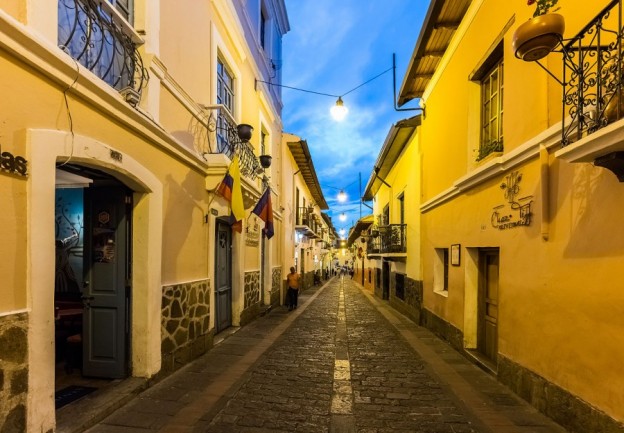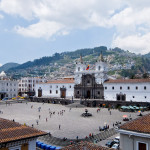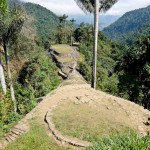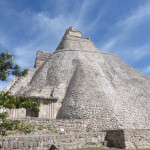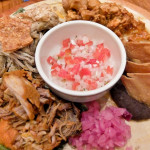Andy Mossack explores Quito in the company of a local to uncover the beating heart of Ecuador’s sky-high capital.
Early morning atop the Cruz de Loma lookout. At almost 4,000 metres it’s close to the summit of Quito’s still-grumbling Pichincha volcano, and I’m sitting on a swing. Not any old swing you understand, but one that flies out with the entire spread of Ecuador’s capital far below. From up here, the city is like a long sausage squeezed between mountains and volcanoes; just 3 kilometres wide but over 30 kilometres long.
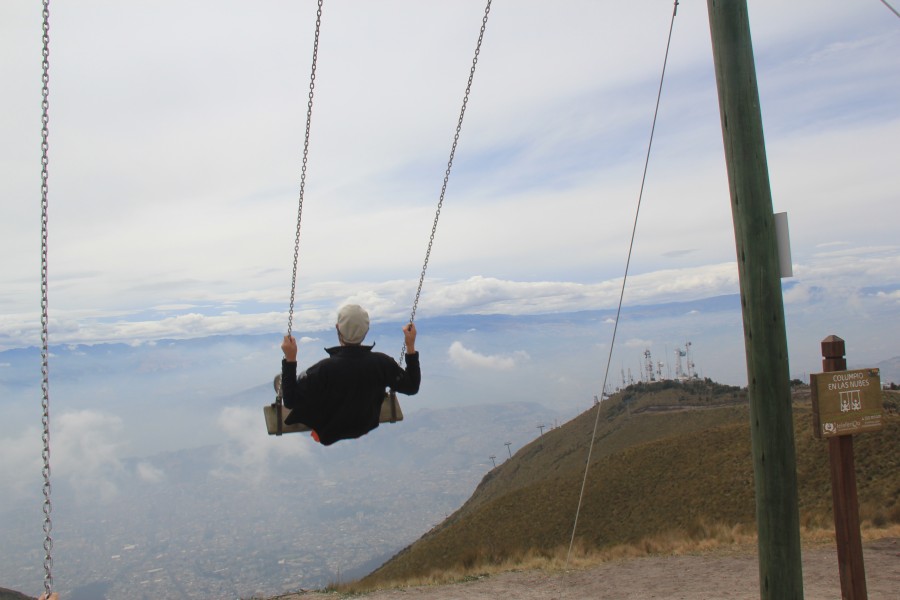
Thankfully I didn’t have to climb up here, I took the famed TelefériQo gondola, one of the highest aerial lifts in the world and a spectacular ten-minute ride. Whilst it was originally built as a tourist attraction in 2005, the lack of serious tourist traffic made it popular with Quiteños, particularly for hiking the additional three hours up to Pichincha’s summit or just hanging out with friends for a picnic.
The Andes encircles Quito like an expensive necklace, her volcanoes the stand-out stones whilst the statue of the winged Madonna is the centrepiece, visible from every corner. Quito is a close second to La Paz as the world’s highest capital city and for new arrivals taking a walk, it doesn’t take long to be reminded of the altitude by your shortness of breath. Particularly when you factor in some of the steep streets here. Small wonder there are parallels to San Francisco, even the plaza in the old town carries the same name, as does the church, the convent and the university. But unlike San Francisco, the landscape here is distinctly Baroque courtesy of Ecuador’s former masters, the colonial Spanish.
Speaking of the historic centre, this ancient jewel has character seeping from every cobbled stone, nook and cranny. It’s Quito’s beating heart and proudly justifies its status, together with the Galapagos Islands, as the first two inscribed properties in UNESCO’s World Heritage List.
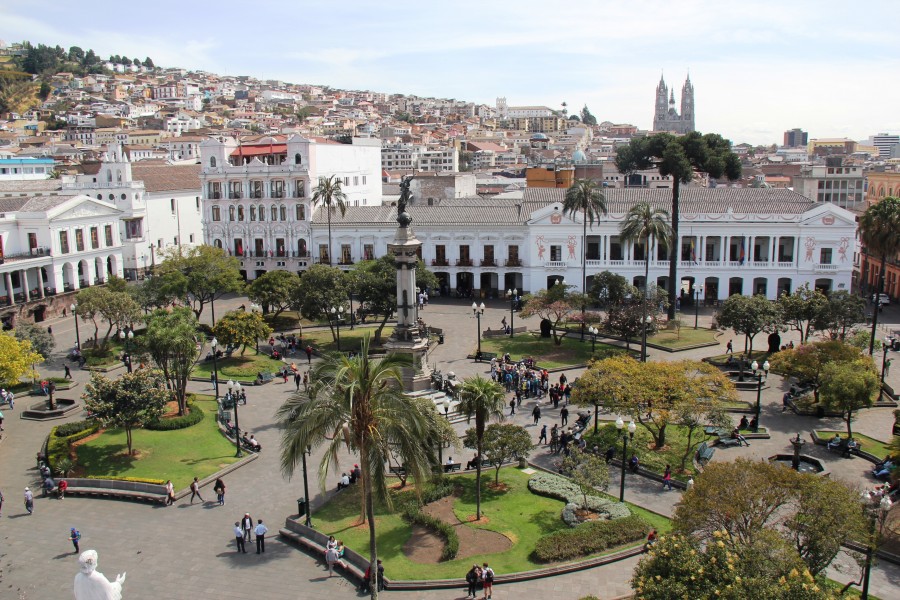
Nowhere is this better portrayed perhaps than in Plaza Grande, also called Independence Square; the church dominating one side, the presidential palace the other and the monument to the independence heroes of August 10, 1809, at its centre. It’s a hub of activity from morning till night and from where I’m sitting, at a window table in the café of the equally historic Plaza Grande Hotel, I watch the daily tableau play out. Shoeshine vendors ply their trade busy with customers in the early morning rush hour. Indigenous ladies in traditional dress walk the plaza offering up generous portions of home-made meringues. Cosy merchant shops tucked under the palace porticos display hand-made Alpaca ponchos and hats.
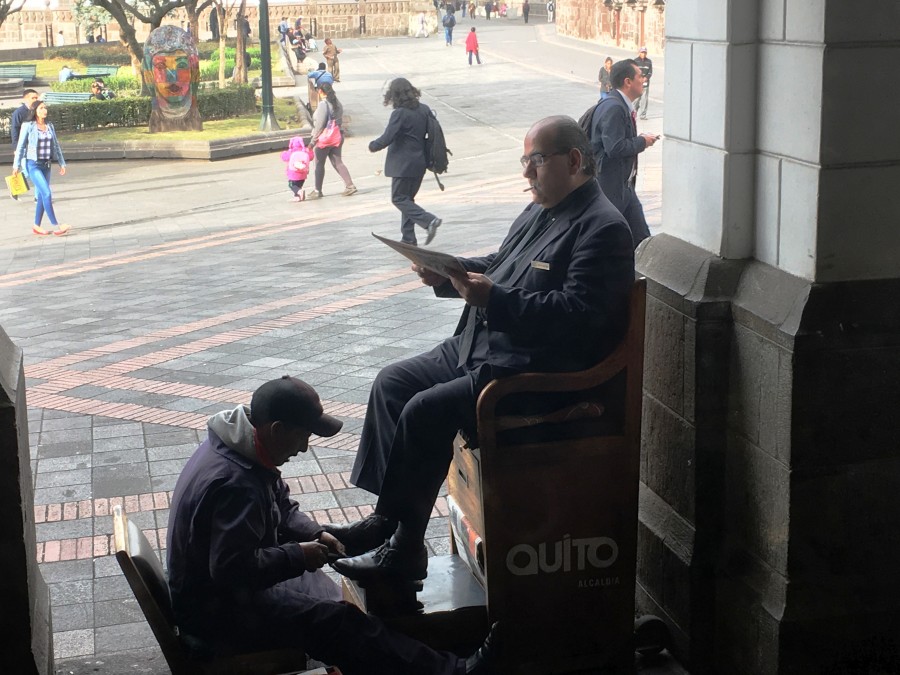
Quito sits squarely on the Equator, so the daylight hours are regular all year long (beginning and ending around 6 o’clock) as is the temperature, which stays fairly comfortable. The subtle difference is Quito’s elevation, so in the evenings one of those ponchos will come in very handy.
I’m waiting to meet Rothman, my own personal Quiteño guide who is showing me around some of the favourite parts of his home city.
The Cathedral and La Compañía de Jesús
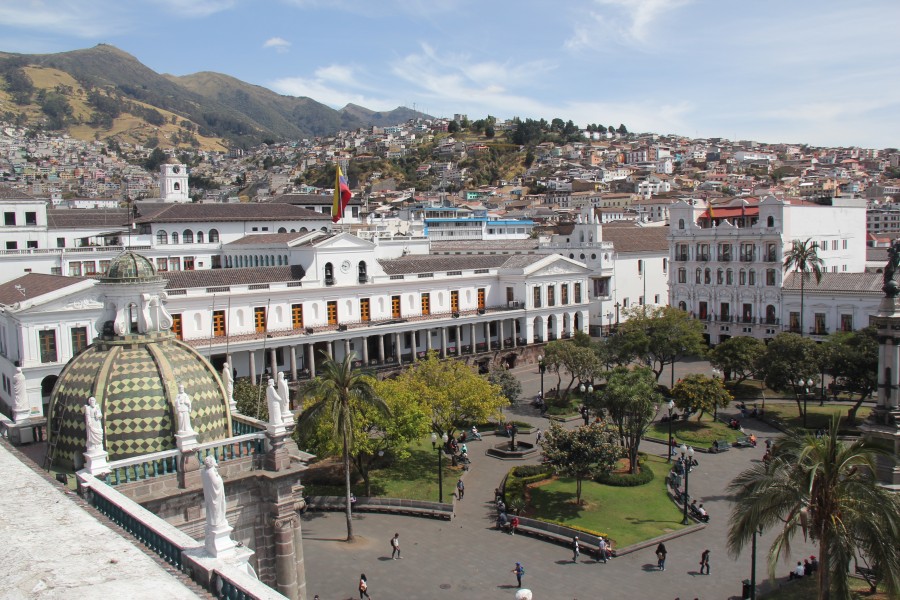
For a bird’s eye view of Plaza Grande, taking the adventurous hike up to the domes atop the Cathedral is well worth the effort. One of South America’s oldest temples and a heady mix of Baroque, Moorish, Rococo, Neo-Gothic and Neo-Classic styles apart, this grande-dame has the best view of the historic centre in Quito. But it’s not without an adventurous clamber up ancient narrow spiral steps, across equally ancient and narrow balconies and under and over a few iron supports before stepping out onto the roof among the domes and seeing the old town stretching out in all directions.
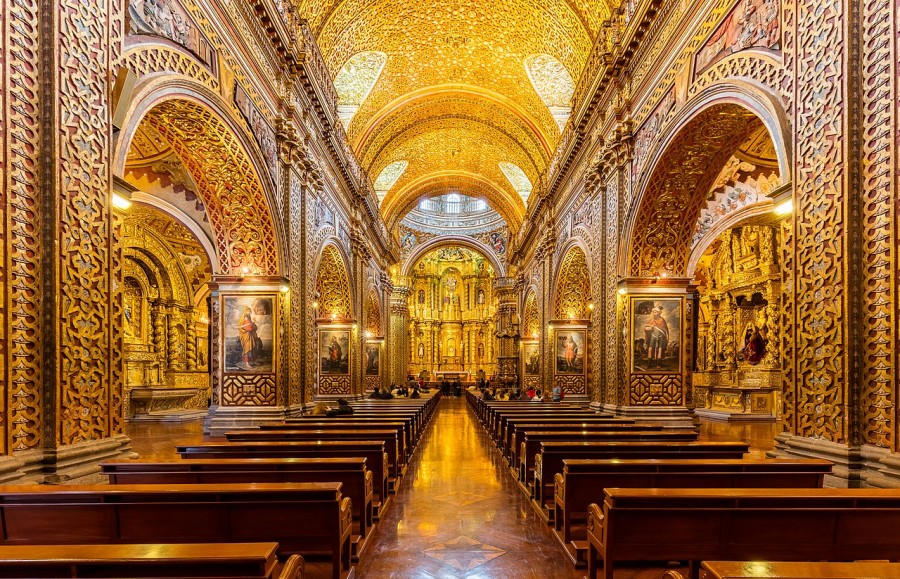
Quiteños take their faith very seriously and if churches are your thing Quito has twenty-five of them. The amount of gold leaf used in them is quite astonishing, but then again, during colonial times gold was the one commodity in abundance. Of them all, perhaps the most visually overwhelming is La Compañía de Jesús which dates back to 1605 and took 160 years to construct. The gold on display here is literally staggering.
Chocolate tasting
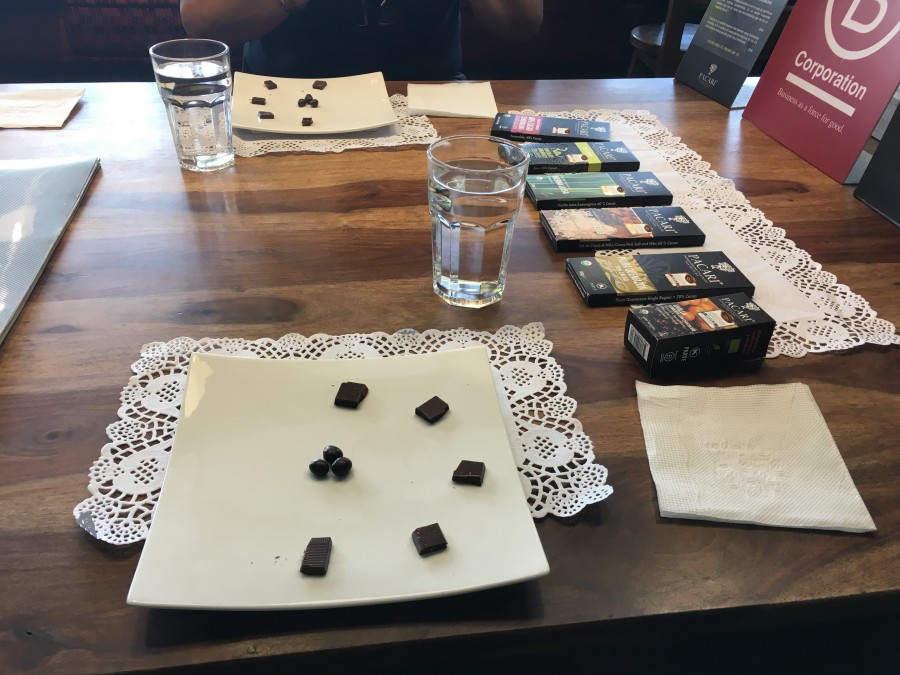
We walk back to Plaza Grande and pop into Quito Tourismo on the corner of Venezuela Street for a chocolate pit stop. Ecuadorian chocolate is right up there with some of the finest in the world and one of the best local brands is Pacari who offers a tasting session through a variety of flavours from lemongrass to caramel. All at least 60% dark, all organic, all via sustainable farming and all utterly delicious.
Barrio La Mariscal
Venturing away from the old town, the barrio of La Mariscal is awash with bars, restaurants, clubs and artisan galleries. We pop over to haggle for t-shirts and jewellery at the open-air market before dropping into Galeria Ecuador, a gallery representing over 300 high-quality local artists and artisans.
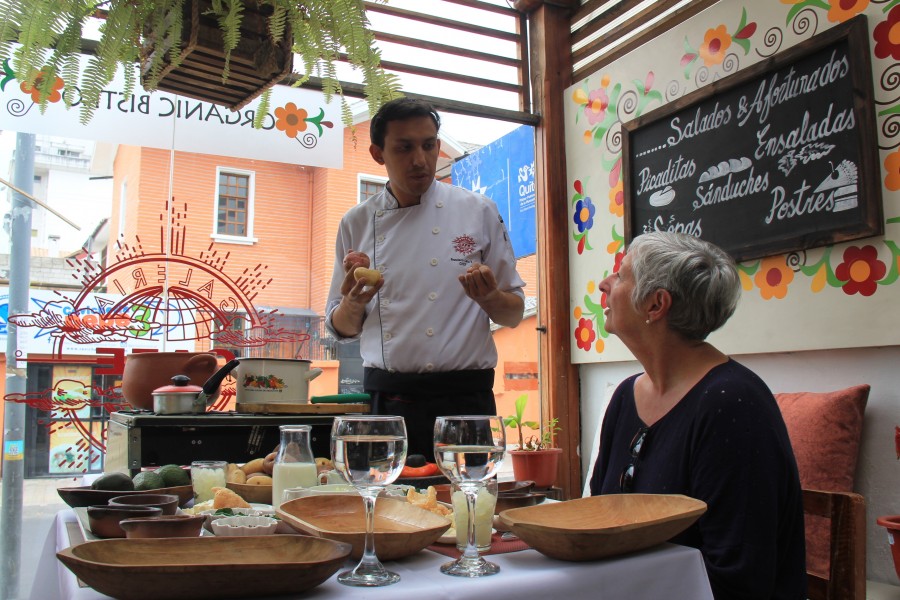
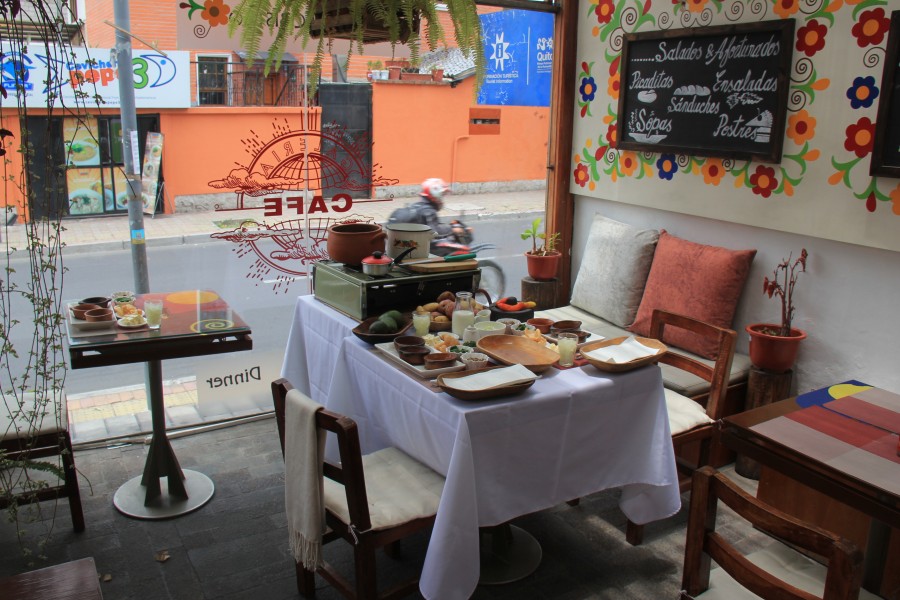
Chef Francisco Larco has his restaurant in here and is showing me how to make traditional Ecuador potato soup known as locro de papa. It’s a heavenly soup made not just with any potato but “two kinds, Chola and Gabriela” says Francisco, very important for the taste.” It also has fresh avocado (practically every dish contains avocados in Ecuador), cheese, toasted maize and chilli.
Painting and wine
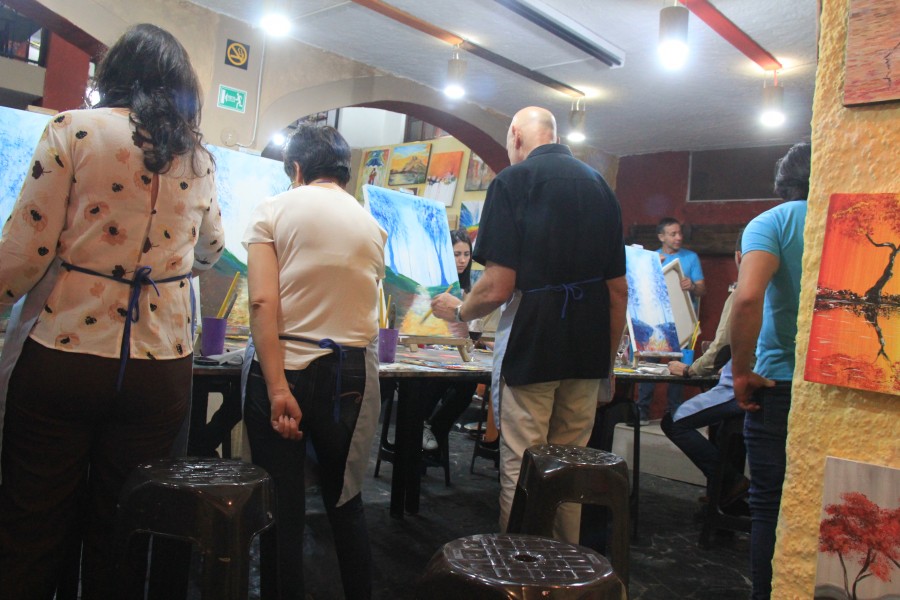
For something well off the tourist pathway but not far from La Mariscal is Mon Atelier a painting workshop for beginners and fortified by some excellent wine to keep the brushstrokes creative. A family-run business, this is a fun 2 hours learning to paint a canvas from scratch following simple instructions from a skilled tutor. I end up with a very passable canvas that currently adorns my living room wall.
Visit the Middle of the World twice!
No visit to Quito can really be fulfilled without standing on the equator line. Rothman assures me that locals are just as serious about this as visitors and the Ciudad Mitad del Mundo or Middle of the World City is a genuine homage to the original French astronomers who in 1736 worked out where they thought the line was. Astonishingly, they were only about 240 metres out in their calculations. Nevertheless, the spot is marked by a tall monument with a yellow line running through it. There’s also a small village of museums restaurants and shops and many Quiteños come here and just hang out for the day.
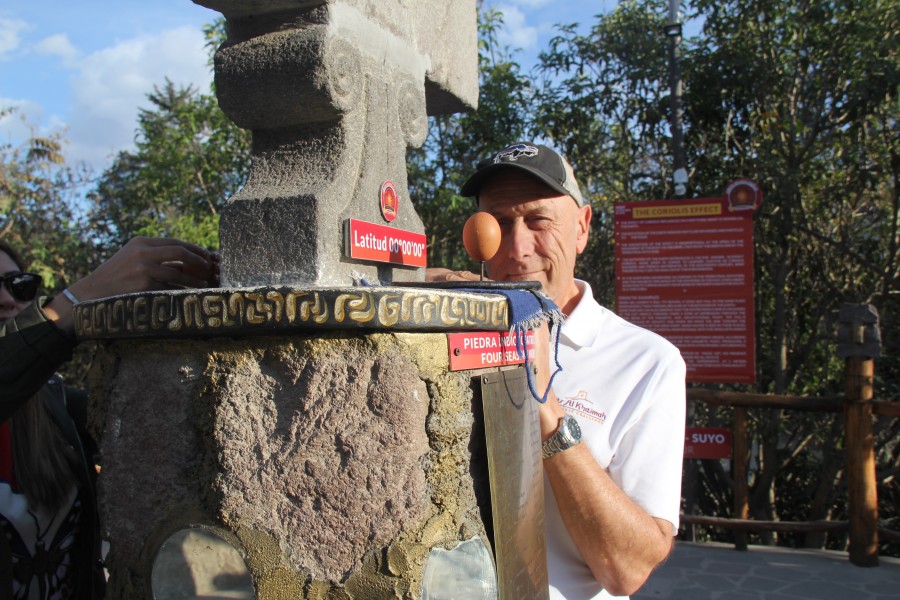
The actual Line lies next door at the Intiñan Solar Museum, a thoroughly commercial enterprise which focuses on the numerous indigenous tribes of Ecuador. A guide takes me through a collection of authentic native huts (they were built and blessed by the Shuar tribe) on a journey around Ecuador’s pre-Inca roots. The climax is a fun series of physics experiments slap bang on the Line at Latitude 0 to show off the Equator’s magnetic properties. Try managing to place a fresh egg on its end on the head of a nail (I did it twice) or watch water drain clockwise or counter-clockwise depending on which side of the line you stand. There are some scientists who scoff at these antics telling us they can all be replicated back home. But why let the truth get in the way of a great story.
The Yunguilla Community
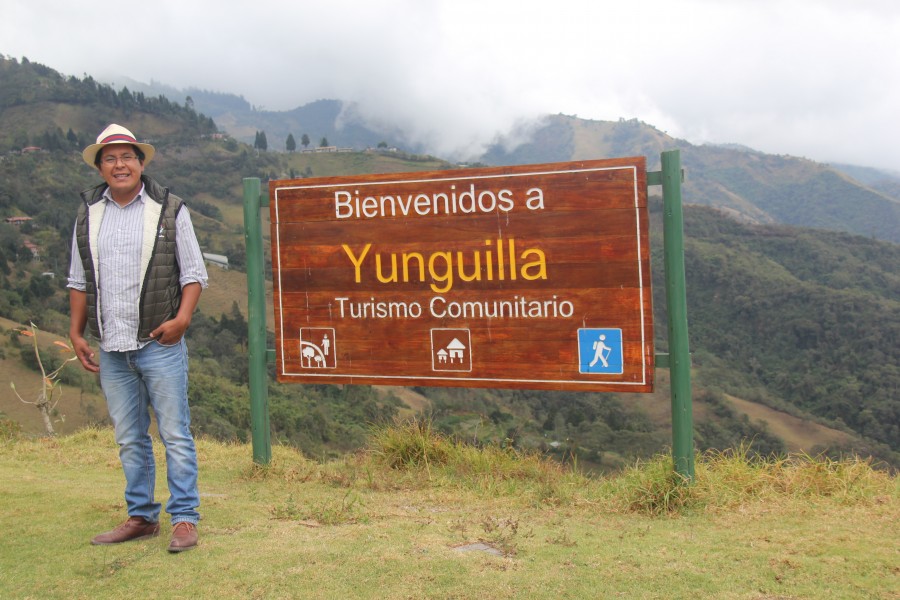
After a 45-minute drive out of the city, we climb up into the cloud forest and arrive at the parish of Calacali. This is where the Yanguilla community lies, a co-operative of fifty local farming families who have literally re-invented their lives. Their ancestors worked this land for over 800 years but in the 1960s they were forced into logging and smuggling to sustain an income. With the help and support of volunteers, the community refocused its energy towards reforestation and organic farming and dairy production. Today their cheeses, yoghurts and sugar-free jams are sold in Quito city and their forests and pastures are magnets for birds and animals once again. The orchards are full of fresh herbs, vegetables and fruit and their impressive restaurant is open at weekends offering up delicious homemade traditional fare and fabulous views over the mountains.
Mashpi Lodge
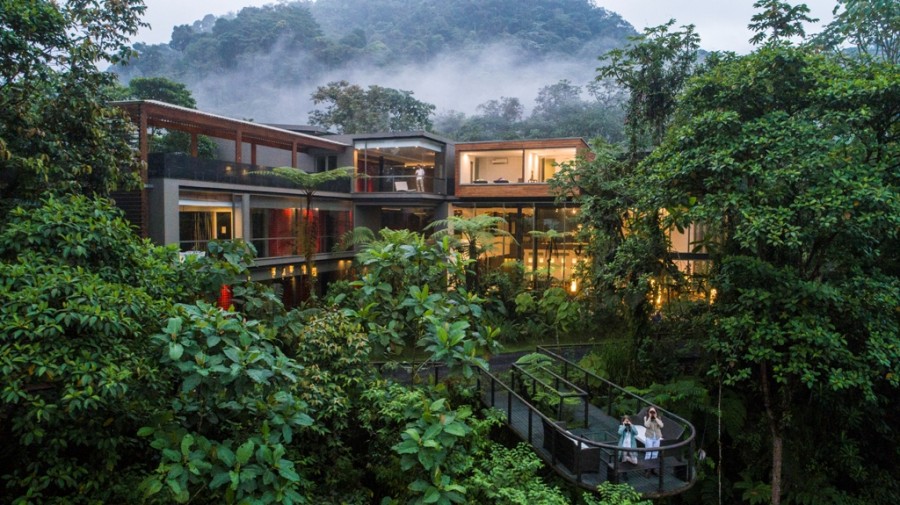
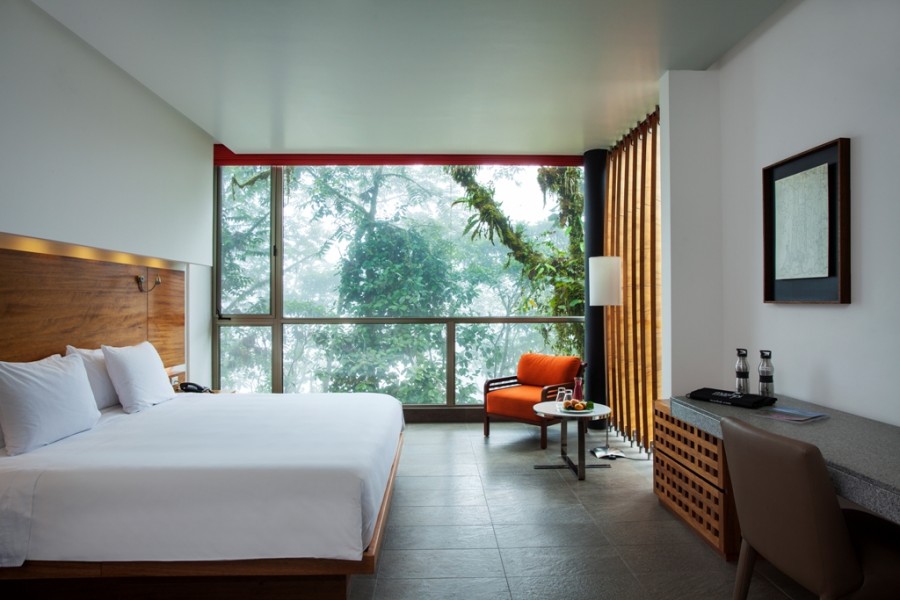
The three-hour drive from Quito brings us up into the Andean cloud forest and Mashpi Lodge, the luxury wilderness retreat from former Quito mayor Roque Sevilla. It was featured on the BBC TV series Life Beyond the Lobby a series celebrating luxury hotels in the some of the World’s remotest places. Mashpi Lodge sits in 3,000 acres of private verdant cloud forest and each of the 23 rooms offer stupendous verdant views from floor to ceiling glass across the whole of one wall. From personal guides taking you on daily adventure treks to enjoying some outstanding food courtesy of the all-inclusive tariff, it is a quite extraordinary place to stay.
Most visitors to Quito tend to be coming from or going to a Galapagos cruise and don’t perhaps factor in a long enough stay in this fascinating city. A city that has so much to say and never enough time to tell it. For me though, I have plenty of time, so for now, I’m going back to my cloud swing high on the slopes of Pichincha for one more try.
All images (c) Andy Mossack except Calle de la Ronda and La Compañía de Jesús.
Tell more about visiting Quito
Full details of Andy’s adventures in Quito can be found at Quito Tourism
Where to stay in Quito: Plaza Grande Casa Gangotena (the same owners as Mashpi Lodge) Mashpi Lodge
Click here for the very best hotel rates in Quito
Where to eat in Quito: Galeria Café Home of Chef Francisco Larco’s legendary potato soup! Casa Gangotena Restaurant Café Plaza Grande, Santa Rosa Beer Experience fashionable microbrewery with very tasty food.
Ciudad Mitad del Mundo Intiñan Solar Museum
Getting to Quito
Avianca flies daily Dreamliner services from London Heathrow to Quito via Bogota.
Parking at London Heathrow
One week’s Meet and Greet airport parking at London Heathrow with Airport Parking and Hotels (APH) costs from only £90.50. To book visit APH or call 01342 859536.

